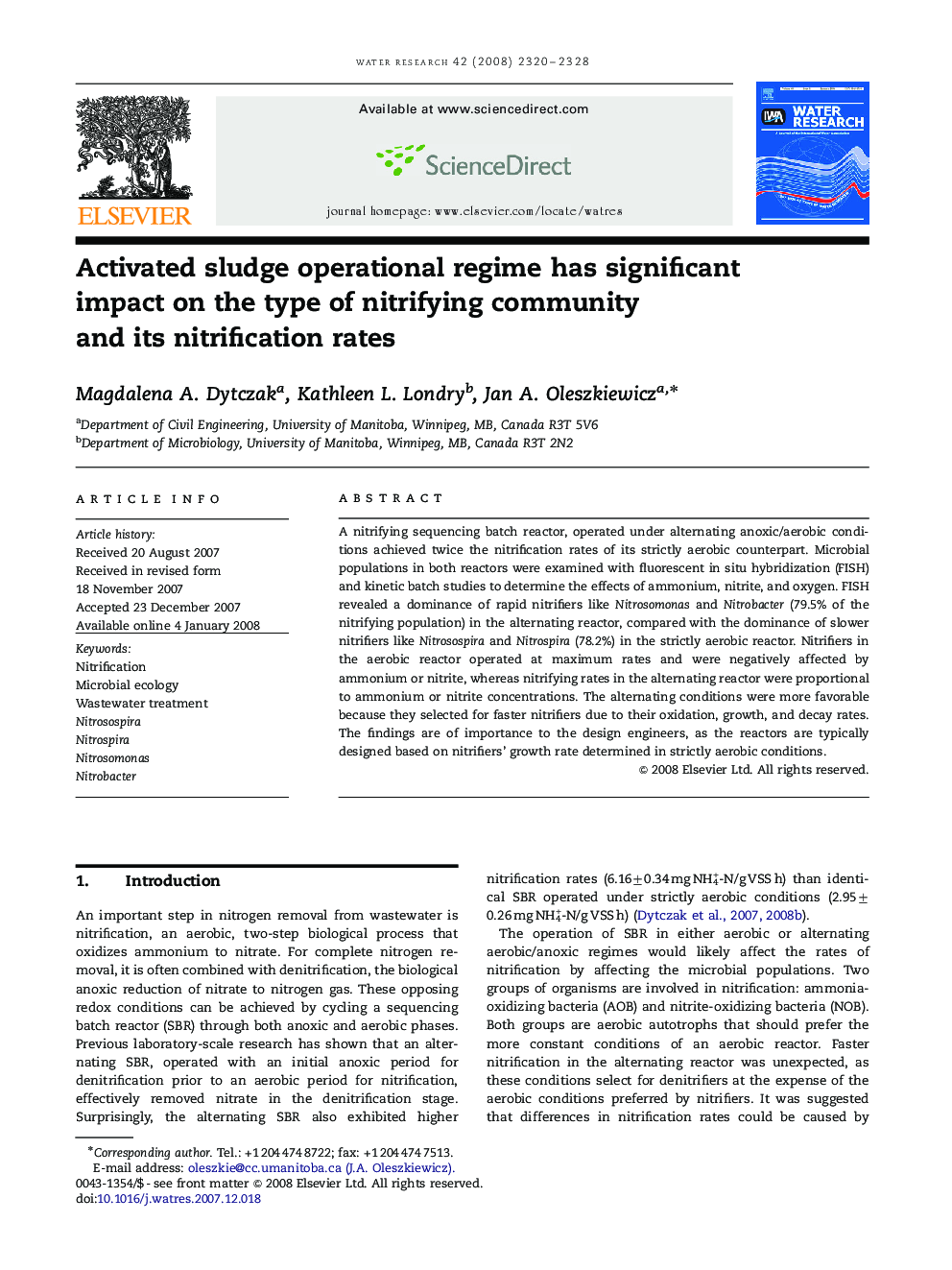| Article ID | Journal | Published Year | Pages | File Type |
|---|---|---|---|---|
| 4484960 | Water Research | 2008 | 9 Pages |
A nitrifying sequencing batch reactor, operated under alternating anoxic/aerobic conditions achieved twice the nitrification rates of its strictly aerobic counterpart. Microbial populations in both reactors were examined with fluorescent in situ hybridization (FISH) and kinetic batch studies to determine the effects of ammonium, nitrite, and oxygen. FISH revealed a dominance of rapid nitrifiers like Nitrosomonas and Nitrobacter (79.5% of the nitrifying population) in the alternating reactor, compared with the dominance of slower nitrifiers like Nitrosospira and Nitrospira (78.2%) in the strictly aerobic reactor. Nitrifiers in the aerobic reactor operated at maximum rates and were negatively affected by ammonium or nitrite, whereas nitrifying rates in the alternating reactor were proportional to ammonium or nitrite concentrations. The alternating conditions were more favorable because they selected for faster nitrifiers due to their oxidation, growth, and decay rates. The findings are of importance to the design engineers, as the reactors are typically designed based on nitrifiers’ growth rate determined in strictly aerobic conditions.
